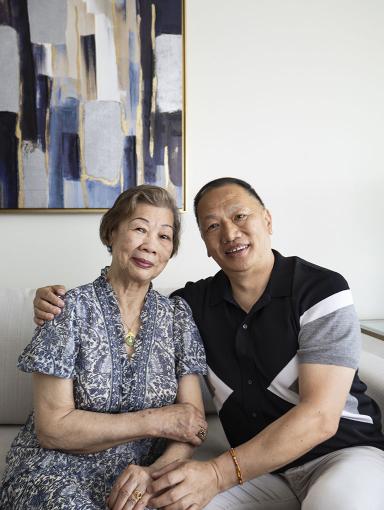Older Hospitalized Patients With Alzheimer’s Disease And Related Dementias Face Increased One-Year Costs
Researchers find increased one-year costs of $34,828 in Alzheimer’s disease and related dementias patients
New research examines one-year health-care costs associated with delirium in older hospitalized patients with and without Alzheimer’s disease and related dementias that have not been examined previously.
Researchers found:
- Increased 1-year costs of $34,828 in Alzheimer’s disease and related dementias patients with delirium (vs. without).
- Increased costs for delirium in Alzheimer’s disease and related dementias occur later during the 365-day study period.
- For Alzheimer’s disease and related dementias patients, cost differences between those with and without delirium increased over 1 year after hospitalization.
- For non-Alzheimer’s disease and related dementias patients, the parallel cost differences were consistent over time after hospitalization.
“Our findings suggest an increasing cost difference across one year for Alzheimer’s disease and related dementias patients with delirium compared to Alzheimer’s disease and related dementias patients without delirium,” said Dr. Tammy T. Hshieh of the Aging Brain Center, Hinda and Arthur Marcus Institute for Aging Research, Hebrew SeniorLife and Brigham and Women’s Hospital. “Because delirium is preventable – patients and their families can advocate for nonpharmacologic interventions and vigilance during hospitalization to try to prevent the costly downstream cascade,” she said.
The findings appeared in “One-year Medicare costs associated with delirium in older hospitalized patients with and without Alzheimer’s disease dementia and related disorders”, published today in Alzheimer's & Dementia: The Journal of the Alzheimer's Association.
Methods
Medicare costs were determined prospectively at discharge, and at 30, 90, and 365 days in a cohort (n = 311) of older adults after hospital admission.
Results
Seventy-six (24%) patients had ADRD and were more likely to develop delirium (51% vs. 24%, P < 0.001) and die within 1 year (38% vs. 21%, P = 0.002). In ADRD patients with versus without delirium, adjusted mean difference in costs associated with delirium were $34,828; most of the excess costs were incurred between 90 and 365 days (P = 0.03). In non-ADRD patients, delirium was associated with increased costs at all timepoints. Excess costs associated with delirium in ADRD patients increased progressively over one year, whereas in non-ADRD patients the increase was consistent across time periods.
Discussion
The study findings highlight the complexity of health-care costs for ADRD patients who develop delirium, a potentially preventable source of expenditures.
Authors
Tammy T. Hshieh 1,2,3 Ray Yun Gou 1 Richard N. Jones 4 Douglas L. Leslie 5 Edward R. Marcantonio 3,6,7 Guoquan Xu 1 Thomas G. Travison 1,3 Tamara G. Fong 1,3,8 Eva M. Schmitt 1 Sharon K. Inouye 1,3,7 for the BASIL I Study Group.
1 Aging Brain Center, Hinda and Arthur Marcus Institute for Aging Research, Hebrew SeniorLife, Boston, Massachusetts, USA
2 Division of Aging, Department of Medicine, Brigham and Women’s Hospital, Boston, Massachusetts, USA
3 Harvard Medical School, Boston, Massachusetts, USA
4 Department of Psychiatry and Human Behavior, Department of Neurology, Warren Alpert Medical School, Brown University, Providence, Rhode Island, USA
5 Center for Applied Studies in Health Economics, Department of Public Health Sciences, Pennsylvania State University College of Medicine, Hershey, Pennsylvania, USA
6 Division of General Medicine, Department of Medicine, Beth Israel Deaconess Medical Center, Boston, Massachusetts, USA
7 Division of Gerontology, Department of Medicine, Beth Israel Deaconess Medical Center, Boston, Massachusetts, USA
8 Department of Neurology, Beth Israel Deaconess Medical Center, Boston, Massachusetts, USA.
Dr. Inouye also holds the Milton and Shirley F. Levy Family Chair at the Marcus Institute.
About Hebrew SeniorLife
Hebrew SeniorLife, an affiliate of Harvard Medical School, is a national senior services leader uniquely dedicated to rethinking, researching, and redefining the possibilities of aging. Hebrew SeniorLife cares for more than 3,000 seniors a day across six campuses throughout Greater Boston. Locations include: Hebrew Rehabilitation Center-Boston and Hebrew Rehabilitation Center-NewBridge in Dedham; NewBridge on the Charles, Dedham; Orchard Cove, Canton; Simon C. Fireman Community, Randolph; Center Communities of Brookline, Brookline; and Jack Satter House, Revere. Founded in 1903, Hebrew SeniorLife also conducts influential research into aging at the Hinda and Arthur Marcus Institute for Aging Research, which has a portfolio of more than $63 million, making it the largest gerontological research facility in the U.S. in a clinical setting. It also trains more than 1,000 geriatric care providers each year. For more information about Hebrew SeniorLife, visit our website or follow us on our blog, Facebook, Instagram, Twitter, and LinkedIn.
About the Hinda and Arthur Marcus Institute for Aging Research
Scientists at the Marcus Institute seek to transform the human experience of aging by conducting research that will ensure a life of health, dignity, and productivity into advanced age. The Marcus Institute carries out rigorous studies that discover the mechanisms of age-related disease and disability; lead to the prevention, treatment, and cure of disease; advance the standard of care for older people; and inform public decision-making.
